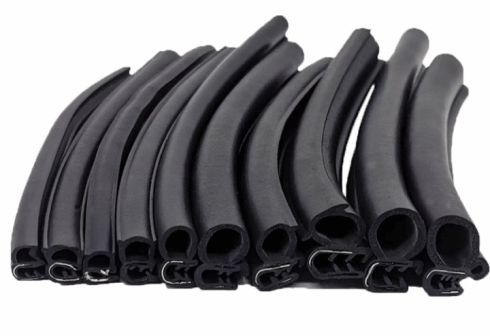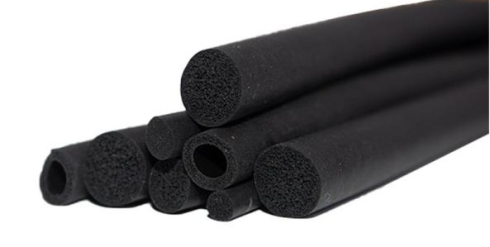Welcome to Hebei Shuozheng Rubber Products Co., Ltd!

The car is noisy. Can using sealing strips or foam glue improve the sound insulation effect?
Views:
Update time:2024-10-12
The lowest cost methods for car sound insulation include:
Installing sealing strips
Blindly applying foam
It cannot be denied that both methods have good effects, but foam should not be used indiscriminately, and sealing strips are not useful for all vehicles.
In the "rubber parts" of cars, the function of sealing strips is first to "stop vibration". Reducing vibration will reduce the air vibration caused by the resonance of body parts, and air vibration will produce sound waves (noise). However, the original car's sealing strips are sufficient to control vibration. Whether the door and the body or the hood and the engine compartment are not in direct contact, the lock and the sealing strip will ensure the rationality of the gap.
Problem: Sealing strips are often synthetic rubbers with relatively low specifications. In the high-frequency extrusion between the door and the body, this mechanical force will accelerate the aging of the sealing strips; the initial sealing strips may reduce airflow to reduce noise, but as the hardness increases, they will crack, and the extrusion during driving will produce more abnormal noise.
Therefore, it is not recommended to install sealing strips on the whole vehicle. If the so-called "big and small D strips" fill up all the gaps in the vehicle, you may regret it after a few years of use. The only vehicles that need to install sealing strips are the ones with obvious air leakage in the doors of two cars. Don't think this is a prank, there are really some cars with obvious air leakage in the front. For these cars, sealing strips can be added to the gaps in front of the doors. Without the abnormal sound of airflow collision, you will have a better driving experience.
Installing sealing strips
Blindly applying foam
It cannot be denied that both methods have good effects, but foam should not be used indiscriminately, and sealing strips are not useful for all vehicles.
In the "rubber parts" of cars, the function of sealing strips is first to "stop vibration". Reducing vibration will reduce the air vibration caused by the resonance of body parts, and air vibration will produce sound waves (noise). However, the original car's sealing strips are sufficient to control vibration. Whether the door and the body or the hood and the engine compartment are not in direct contact, the lock and the sealing strip will ensure the rationality of the gap.
Problem: Sealing strips are often synthetic rubbers with relatively low specifications. In the high-frequency extrusion between the door and the body, this mechanical force will accelerate the aging of the sealing strips; the initial sealing strips may reduce airflow to reduce noise, but as the hardness increases, they will crack, and the extrusion during driving will produce more abnormal noise.
Therefore, it is not recommended to install sealing strips on the whole vehicle. If the so-called "big and small D strips" fill up all the gaps in the vehicle, you may regret it after a few years of use. The only vehicles that need to install sealing strips are the ones with obvious air leakage in the doors of two cars. Don't think this is a prank, there are really some cars with obvious air leakage in the front. For these cars, sealing strips can be added to the gaps in front of the doors. Without the abnormal sound of airflow collision, you will have a better driving experience.
Related News
Read More >>
 Aging problem of sealing strips and preservation methods
Aging problem of sealing strips and preservation methods2024-10-12
Second, avoid high temperature environment. As mentioned earlier...
 What factors mainly determine the size and grade of silicone rubber sealing strips?
What factors mainly determine the size and grade of silicone rubber sealing strips?2024-10-12
Under the same compression load, the same type of media pressure...
 General terminology knowledge in the field of seals
General terminology knowledge in the field of seals2024-10-12
Sealing gasket: a thin-section seal placed between the mating su...
 The car is noisy. Can using sealing strips or foam glue improve the sound insulation effect?
The car is noisy. Can using sealing strips or foam glue improve the sound insulation effect?2024-10-12
Therefore, it is not recommended to install sealing strips on th...
